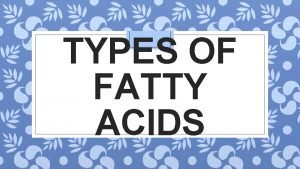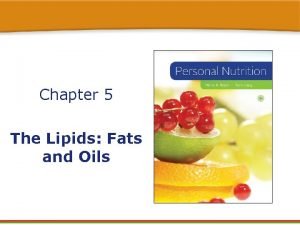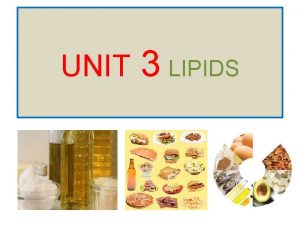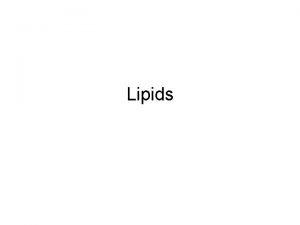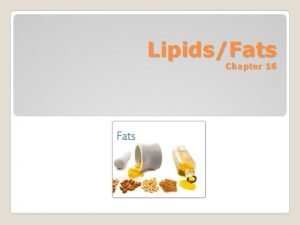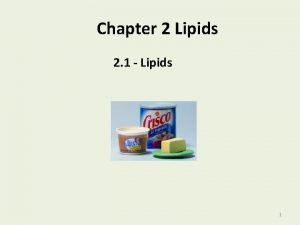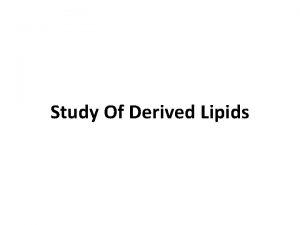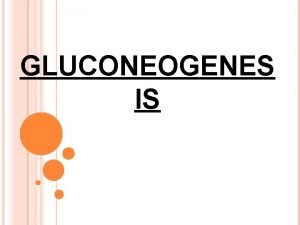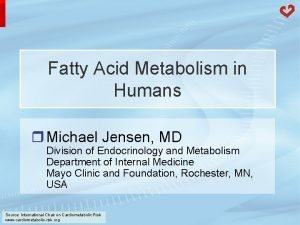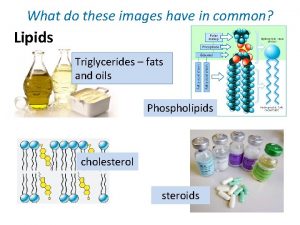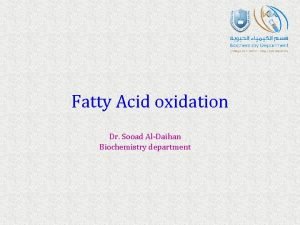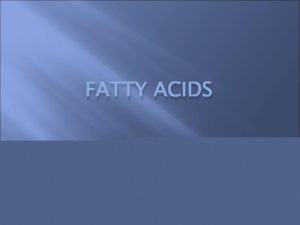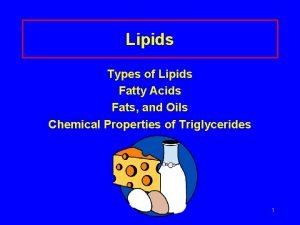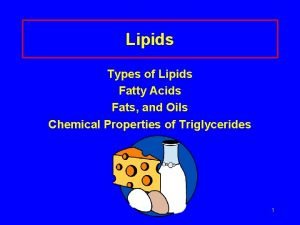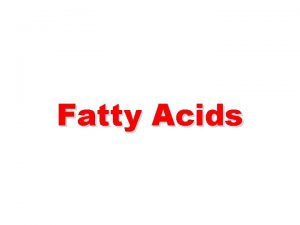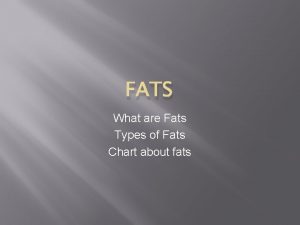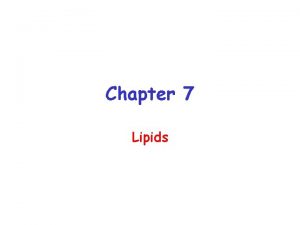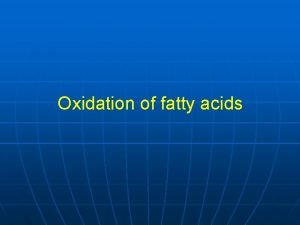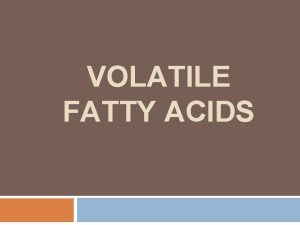Lipids Types of Lipids Fatty Acids Fats and














- Slides: 14

Lipids Types of Lipids Fatty Acids Fats, and Oils Chemical Properties of Triglycerides 1

Types of Lipids • Lipids with fatty acids Waxes Fats and oils (trigycerides) Phospholipids Sphingolipids • Lipids without fatty acids Steroids 2

Fatty Acids • • Long-chain carboxylic acids Insoluble in water Typically 12 -18 carbon atoms (even number) Some contain double bonds corn oil contains 86% unsaturated fatty acids and 14% saturated fatty acids 3

Saturated and Unsaturated Fatty Acids Saturated = C–C bonds Unsaturated = one or more C=C bonds 4

5

Structures Saturated fatty acids • Fit closely in regular pattern Unsaturated fatty acids • Cis double bonds 6

Properties of Saturated Fatty Acids • Contain only single C–C bonds • Closely packed • Strong attractions between chains • High melting points • Solids at room temperature 7

Properties of Unsaturated Fatty Acids • Contain one or more double C=C bonds • Nonlinear chains do not allow molecules to pack closely • Few interactions between chains • Low melting points • Liquids at room temperature 8

Reactions of carboxyl group of fatty acids 9

Reactions of alkenyl chain of unsaturated fatty acids 10

Fats and Oils Formed from glycerol and fatty acids 11

Triglycerides (triacylglycerols) Esters of glycerol and fatty acids 12

Saponification and Soap • Hydrolysis with a strong base • Triglycerides split into glycerol and the salts of fatty acids • The salts of fatty acids are “soaps” • KOH gives softer soaps 13

Saponification 14
 Types of fatty acids
Types of fatty acids Are fats and lipids the same thing
Are fats and lipids the same thing Neutral fat
Neutral fat Fats and lipids
Fats and lipids Difference between saturated and unsaturated fatty acids
Difference between saturated and unsaturated fatty acids Steroid nucleus structure
Steroid nucleus structure Pufas examples
Pufas examples Essential non essential fatty acids
Essential non essential fatty acids Gluconeogenesis nadh
Gluconeogenesis nadh Fatty acid oxidation
Fatty acid oxidation Formation of ketone bodies
Formation of ketone bodies Define compound lipids
Define compound lipids Cholesterol glycerol
Cholesterol glycerol Ester bond in fatty acids
Ester bond in fatty acids Beta oxidation of odd chain fatty acids
Beta oxidation of odd chain fatty acids
